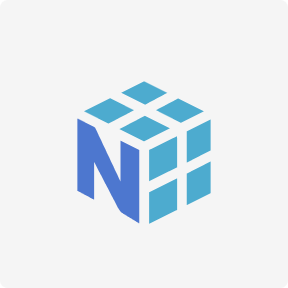Instead of each module being responsible of instantiating it’s own dependencies, it has its dependencies injected during it’s initialization. This way, when you want to test it, you can just inject a mock that implements the interface your code is expecting to. The Onion Architecture does not depend on any specific language or framework.
I will just create a new product and make a request to query all the existing products as well. Just to make our solution a bit clean, let’s also add API Versioning to the WebAPI. With the CRUD logic out of the way, let’s set up EFCore in the Persistence Layer and try to generate onion software architecture a database. Install the following packages to the Persistence Project. Tip #2 – While running the application, you would see that it navigated to ../weatherforecast by default. In the WebApi Project, Properties drill down, you can find a launchsettings.json file.
Difference between Event Bus and Message Queue
Let us take a look at what are the advantages of Onion architecture, and why we would want to implement it in our projects. Conceptually, we can consider that the Infrastructure and Presentation layers are on the same level of the hierarchy. Improves overall code testability as unit tests can be created for separate layers without impacting other modules. It provides better maintainability as all the code depends on deeper layers or the centre. It can be hard to implement a service using Onion Architecture when you have a database-centric background.
- Nevertheless, repository is a kind of adapter between domain and data model.
- The inner layers shouldn’t know if your application is being exposed through an API, through a CLI, or whatever.
- Outer layer data formats should not be used by inner layers.
- To keep things clean, what we can do is, Create a DependencyInjection static Class for every layer of the solution and only add the corresponding.
- Let’s create the table in SQL using the migration commands.
- It represents the Entities of the Business and the Behaviour of these Entities.
- Well, you are in luck 😛 I already have a complete implementation of Blazor Clean Architecture.
We will implement these methods in the customs service code of the ICustomServices Interface given below. Now our service layer contains the reference of the repository layer. First, you need to add the Models folder that will be used to create the database entities.
Backend side architecture evolution (N-layered, DDD, Hexagon, Onion, Clean Architecture)
Difficult to comprehend for amateurs, expectation to absorb information included. Modelers generally jumble up parting obligations between layers. Application engineering is based on top of an area model. Use this method to configure the HTTP request pipeline. This contains the Core Business Logic as part of our project which acts as a layer between the Repositorylayer and Controller. ASP.NET Core offers Health Checks Middleware and libraries for reporting the health of app infrastructure components.
It’s the outer-most layer, and keeps peripheral concerns like UI and tests. For a Web application, it represents the Web API or Unit Test project. As per traditional architecture, the UI layer interacts to business logic, and business logic talks to the data layer, and all the layers are mixed up and depend heavily on each other. In 3-tier and n-tier architectures, none of the layers are independent; this fact raises a separation of concerns. Such systems are very hard to understand and maintain. The drawback of this traditional architecture is unnecessary coupling.
Start by modeling the database
In the case of the API Presentation layer that presents us the object data from the database using the HTTP request in the form of JSON Object. We started with the Domain layer, where we saw the definitions for our entities and repository interfaces and exceptions. We have connected all of our Onion architecture implementation layers, and our https://www.globalcloudteam.com/ application is now ready for use. We’ve shown you how to implement the Domain layer, Service layer, and Infrastructure layer. Also, we’ve shown you the Presentation layer implementation by decoupling the controllers from the main Web application. The obvious advantage of the Onion architecture is that our controller’s methods become very thin.

Now we can develop our project using onion architecture for API Development OR MVC Core Based projects. This layer lies in the center of the architecture where we have application entities which are the application model classes or database model classes. Using the code first approach in the application development using Asp.net core these entities are used to create the tables in the database. The domain models and services will be inside this layer, containing all the business rules of the software. It should be purely logical, not performing any IO operations at all.
— Domain Driven Design
The former are rules that are executed to implement a use case of your application. The latter are rules that belong to the business itself. Your Domain models can have Value objects in their attributes, but the opposite is not allowed. These objects have no behavior, being just bags of data used alongside your models. A Domain Service contains behavior that is not attached to a specific domain model. It could be basically a function, instead of a method.

Domain services are orchestrated by application services to serve business use-case. They are NOT typically CRUD services and are usually standalone services. The solution is moving the abstractions to the layer that uses it. You would move the abstractions to the business layer.
Implementation of Onion Architecture
This file holds all the configurations required for the app launch. Thus, the swagger will open up by default every time you run the application. Next, let’s go to the Infrastructure Folder and add a layer for Database, . To keep things simple but demonstrate the architecture to the fullest, we will build an ASP.NET Core Web API that is quite scalable. For this article, Let’s have a WebApi that has just one entity, Product.

The concept behind Hexagonal Architecture is that your core application logic is written with only a concept of whatever external dependencies it has. In object-oriented terms this means it declares and references and interface, but leaves the implementation of that interface out of the core logic. This can be thought of as a “port” such a display port or USB port.
Software Architecture — The Onion Architecture
But we will just add the BaseAPI Controller as the base class. We will have to register IApplicationDBContext and bind it to ApplicationDbContext, right? Similar to the Application layer, we will have to create a new class just to register the dependencies and services of this layer to the service container. You can see the clear separation of concerns as we have read earlier. To maintain structural Sanity in Mid to Larger Solutions, it is always recommended to follow some kind of architecture. You must have seen most of the Open Sourced Projects having multiple layers of Projects within a complex folder structure.
Najnowsze komentarze